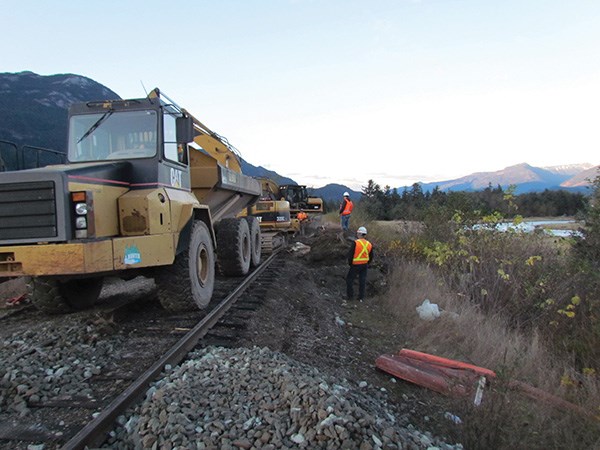Few events can bring life to a standstill like a fuel or chemical spill.
Even small incidents can require enormous money and effort to mitigate the damage.
In response, the province is putting together what it calls a new spill regime to guide how it, as well as local partners such as regional and municipal governments, need to tackle spills when they occur on land or in the water.
The province is currently seeking input from other levels of government to put together this new plan.
In a Dec. 21 letter to the Squamish-Lillooet Regional District, executive director of B.C.’s spills response project Anthony Danks wrote, “British Columbia will be creating a world-class spill response regime to address a wide range of potential land- and marine-based spills.
“We intend to build that new regime collaboratively with First Nations, communities, local governments, industry and other regulators.”
While bodies such as regional and municipal governments typically have plans in place to deal with incidents such as spills, the province has jurisdiction through emergency response officers, who control the response, said SLRD emergency program manager Ryan Wainwright.
Jurisdictionally, the situation gets more complex if a spill takes place in coastal waters, where the federal government becomes involved.
For the regional district, the role is typically to bring in whatever local resources they can provide.
“Obviously the amount of contribution is based on the capabilities of the local government,” Wainwright said.
The Sea to Sky Corridor, for example, does not have a hazmat team but has fire departments with hazmat awareness levels, meaning the members can take on duties such as setting up perimeters and determining whether area evacuation is required.
“In terms of mounting a response, that’s usually done through private contractor… through a private hazmat contractor brought in by the province or the spiller’s insurance company,” Wainwright added.
The issue of spills has been attracting more discussion in recent years because of incidents such as train derailments or spills on water.
Last April there was an oil spill of at least 2,700 litres from a grain ship in Vancouver’s English Bay.
The Squamish area has experienced incidents as well, such as a diesel spill in the Mamquam Blind Channel from a sunken tug boat in January 2014.
In November 2012, a CN locomotive derailed after a flawed segment of track broke away, resulting in a spill of approximately 5,000 litres of diesel fuel into the Squamish Estuary.
The province is now updating how it works with other stakeholders to respond to these kinds of incidents.
A Ministry of the Environment spokesperson clarified that at the local level, governments can provide services such as fire or hazmat teams, or staff from public works or environmental departments to help deal with spills that happen within municipal boundaries.
Because of this role in putting together the new spill response regime, the province has been communicating with stakeholders such as local governments or First Nations.
Previously, local governments and First Nations were consulted through two different intentions papers about the response regime, 2013’s Land-Based Spill Preparedness and Response Symposium and other engagement activities.



